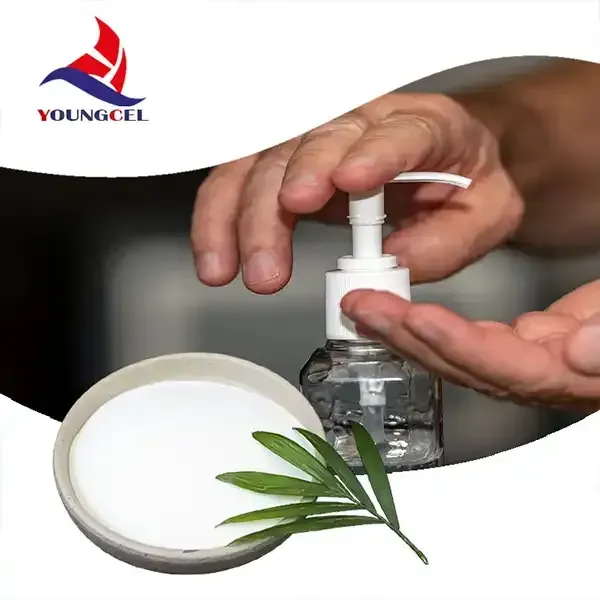Hydroxypropyl Methylcellulose (HPMC) Properties, Applications, and Benefits
Hydroxypropyl methylcellulose (HPMC) is a cellulose ether derived from natural cellulose, known for its unique properties and diverse applications across various industries. It is a non-ionic, water-soluble polymer that possesses the ability to form gels and films, making it an invaluable additive in many formulations. This article will explore the fundamental characteristics of HPMC, its applications, and the advantages it offers.
Physical and Chemical Properties
HPMC is synthesized by the reaction of cellulose with propylene oxide and methyl chloride. The degree of substitution, which indicates how many hydroxyl groups on the cellulose backbone are replaced with hydroxypropyl and methyl groups, affects its solubility and viscosity. HPMC is available in a variety of grades that differ in viscosity, solubility, and other characteristics, making it adaptable for specific applications.
One of the defining features of HPMC is its solubility in cold water, which distinguishes it from other cellulose derivatives that may require heat for dissolution. HPMC forms a viscous solution when dissolved in water, which can create a gel-like consistency depending on the concentration. Additionally, HPMC is known for its thermal stability and resistance to acid and alkali, contributing to its wide range of usability.
Applications in the Pharmaceutical Industry
In the pharmaceutical field, HPMC plays a vital role as an excipient in the formulation of tablets and capsules. It is used as a film-forming agent, providing a protective layer that enhances the stability of the active ingredients. HPMC helps control the release rate of drugs, making it a crucial component in sustained-release formulations. Its gel-forming properties are particularly beneficial in creating hydrophilic matrices, which facilitate the controlled release of medications.
Moreover, HPMC is employed as a viscosity modifier in various liquid formulations, including suspensions and emulsions, ensuring uniform distribution of active ingredients. Its use in eye drops and topical formulations also enhances the viscosity, improving the contact time and efficacy of the medicated solutions.
chemic hpmc hydroxypropyl methyl cellulos hpmc

Role in Food and Beverage Production
Beyond pharmaceuticals, HPMC finds extensive use in the food and beverage industry as a food additive. It acts as a thickening agent, emulsifier, and stabilizer, helping to improve the texture and consistency of products like sauces, dressings, and dairy products. HPMC's ability to retain moisture makes it beneficial in baked goods, extending shelf life while maintaining freshness.
Additionally, with increasing consumer demand for vegetarian and vegan options, HPMC serves as an effective meat substitute in various plant-based products. Its gel-forming properties provide the desired texture and mouthfeel, enhancing the sensory experience of consumers.
Construction and Personal Care Applications
HPMC is also widely used in the construction industry, particularly in the formulation of cement-based products like tile adhesives, wall coatings, and plasters. It improves workability, water retention, and adhesion, ensuring better performance during application and enhancing the durability of the final product.
In the personal care arena, HPMC is incorporated into cosmetic and skincare formulations due to its hydrating properties. It helps in thickening creams and lotions while providing stability to emulsions. Additionally, HPMC is used in hair care products to provide texture and shine, making it a versatile ingredient in modern formulations.
Conclusion
Hydroxypropyl methylcellulose (HPMC) stands out as a multifunctional polymer with varied applications across multiple industries. Its unique properties, such as solubility in cold water, gel formation capability, and viscosity-modifying abilities, make it an essential component in pharmaceuticals, food production, construction, and personal care products. As industries continue to innovate and adapt to consumer preferences, the significance of HPMC is poised to grow further, underlining its role as a crucial ingredient in modern formulations. Whether enhancing drug formulations or improving food textures, HPMC remains a vital player in driving efficiency and quality across diverse applications.
-
Rdp Powder: Key Considerations for Wholesalers in the Building Materials IndustryNewsJul.08,2025
-
Key Considerations for Wholesalers: Navigating the World of Hpmc - Based ProductsNewsJul.08,2025
-
Hpmc Detergent: Key Considerations for WholesalersNewsJul.08,2025
-
Key Considerations for Wholesalers: China Hpmc For Tile Adhesive, Coating Additives, Concrete Additives, and MoreNewsJul.08,2025
-
Crucial Considerations for Wholesalers: Navigating the World of Construction MaterialsNewsJul.08,2025
-
Key Considerations for Wholesalers Sourcing Additive For Cement, Additive For Concrete, Additive For Putty from Additive Manufacturer Shijiazhuang Gaocheng District Yongfeng Cellulose Co., Ltd.NewsJul.08,2025




